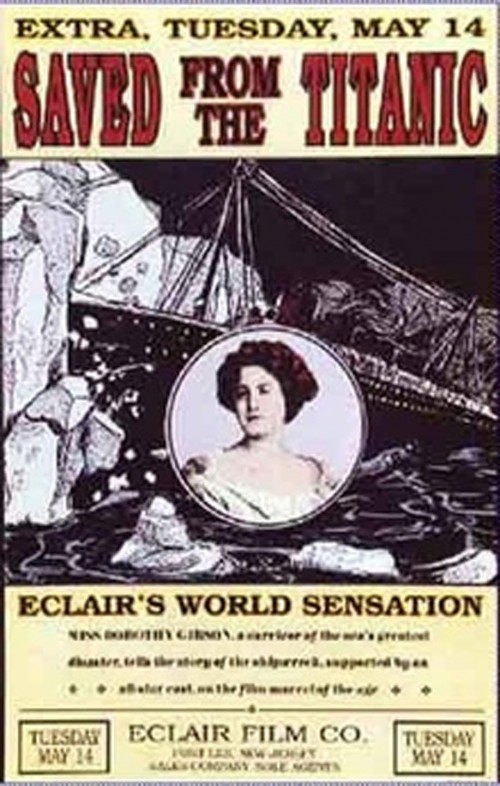The Titanic and the cinema
The tragic history of the Titanic has been an important source of inspiration for the film industry. Numerous American, English, German and Italian directors have not missed the opportunity to give their audiences a chance to relive that last tragic night on board the Titanic in their films, television series or documentaries.
Most of these productions have tended to mix the true story with fiction and include intrigues of all sorts: romantic, financial or political. As for the sinking of the liner, all kinds of melodramatic resources have been called upon.
When the Titanic sank on April 15th 1912, the film industry was in the midst of its silent, black and white film era. News of the accident along with the few rare images of the liner (and often those of her twin, the Olympic), soon gave film makers a subject to work with. The first film was released only a few months after the disaster:
- - Saved from The Titanic (USA) directed by Etienne Arnaud was released on May 14th 1912. This 10 minute, silent, black and white film (filmed in less than a week) was co-written by the American actress Dorothy Gibson who also played herself in the film. The only copy of the film was destroyed by a fire at the Éclair Studio in 1914.
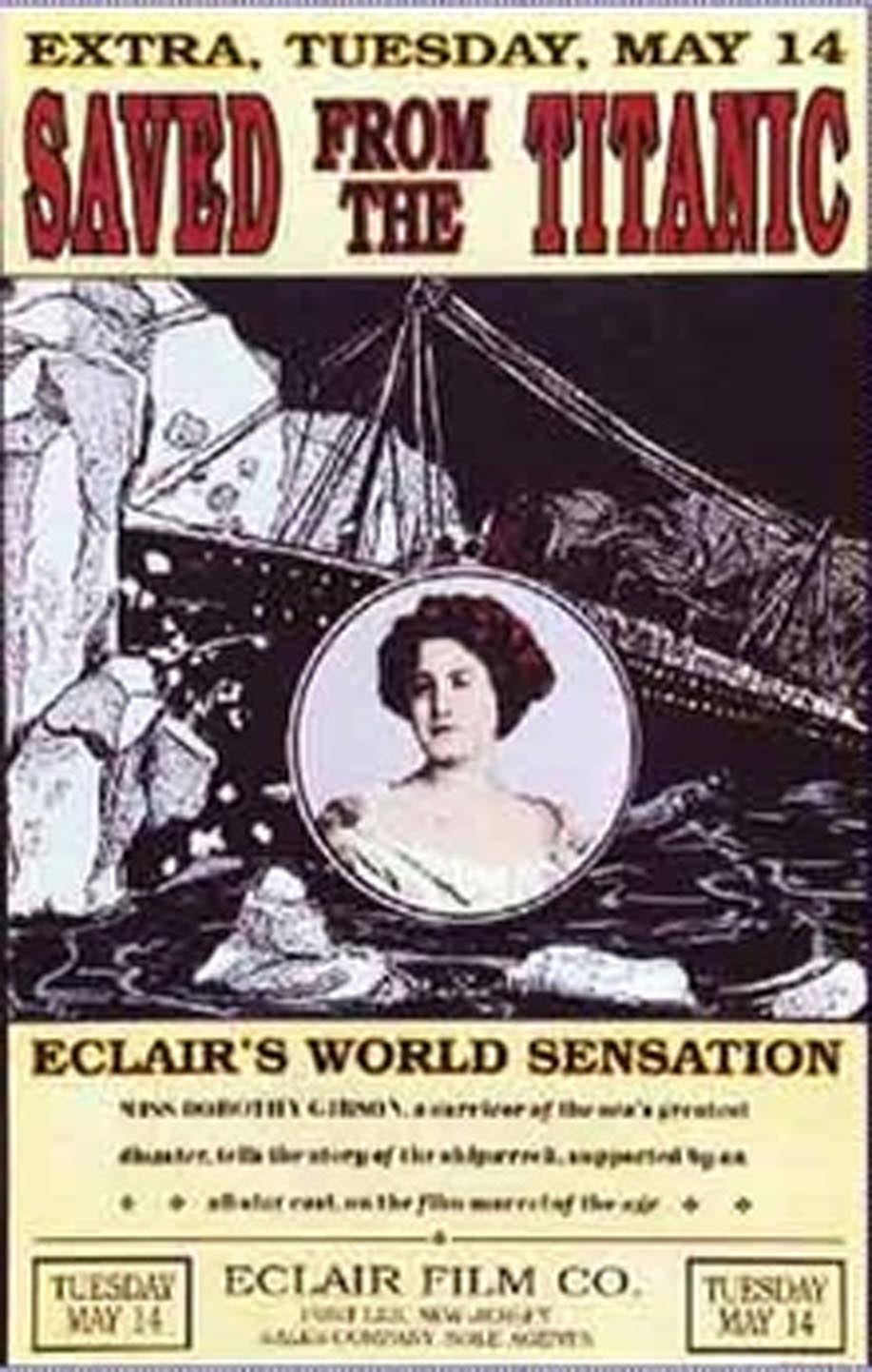
- - In Nacht und Eis (In the night of ice), silent film released on August 17th 1912 in Berlin, directed by Mim Misu. This film tells the story of the disaster in a very romantic way and lasts 40 minutes which is unusually long for films of the time. The director therefore takes a few cinematic liberties with the story: the ship’s boilers explode, flames spurt out of the chimneys, the passengers all sing hymns together and there is only one victim.
- - Titanic by Pier Angela Mazolotti (released in Italy in April 1915). Silent, black and white film.
- - Atlantic (known under the title: Titanic: Disaster in the Atlantic) by Ewald André Dupont, released on October 4th1930 in America. This was a black and white film but with sound, lasting 90 minutes and marking the acting debut of Danny Green. Versions were also released in German “Atlantik” and French “Atlantis”.
- - Titanic (1943) by Herbert Selpin and Werner Kingler, is a veritable Nazi superproduction commandeered by Joseph Goebbels, minister of propaganda. This 85 minute black and white film (80 mins for the censored version) presents the sinking of the Titanic but behind this tragedy, the film aims to condemn the cupidity of the ship’s British owners through the character of Joseph Bruce Ismay who does not hesitate to launch his ship into the Atlantic Ocean regardless of any dangers. However, Lieutenant Petersen, the German officer on board, opposes his methods and saves the ship’s proprietor’s life in the aim of bringing him to justice to pay for his crimes.
- - Titanic released in 1953 by Jean Negulesco. This 98 minute black and white Hollywood superproduction describes the catastrophe in minute detail but its intrigue is one of the most banal. For more authenticity, the producers recruited the captain of the Queen Elizabeth as technical advisor. The film’s original title was Plus près de toi mon Dieu (Nearer to you God).

- - Atlantique, Latitude 41°, (original title: A night to Remember) by Roy Ward Baker, 1958. The film is an adaptation of the novel by Walter Lord, published in 1955. The scenario is based on accounts from the catastrophe’s 64 survivors. There is one remaining historical reference.


- - S.O.S Titanic, 1979 American film made for television by William Hale. Numerous scenes from this 180-minute colour film were shot on board (or around) RMS Queen Mary.
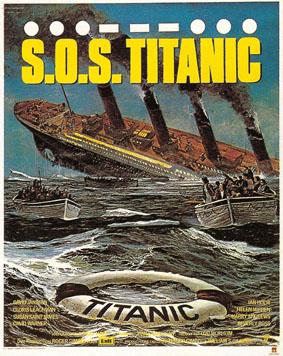
- - Titanic – Nachspiel einer Katastrophe by Lutz Büscher (German television film released in 1984)
- - The Titanic, American television film from 1966 made by Robert Lieberman (2 x 1h30) with a budget of $13,000,000. Its rebound scenario is based around a delinquent adventurer who steals from rich 1st class passengers. . released in 1984)
- - Titanic, released in 1997 and directed by James Cameron (194 mins). A worldwide success: for a budget of $200,000,000, the film made $1,835,300,000 in ticket sales around the globe in just three months (over 4 billion one year after its release) and won 11 Oscars. Don Lynch from the Titanic Historical Society was a consultant on the film. Producers were able to gain access to the private archives of Harland & Wolff. The film was shot in Mexico. A few figures: construction of a 236 m long ship, an artificial water basin at Rosarito Beach (410 m long, 35,000 m², 65 million litres of sea water) and 4 other film sets including another water basin in a studio (19 million litres) for the indoor scenes, construction of 8 model ships including one 15 m long, numerous special effects …. filming took 163 days.
- - Titanic: La Leggenda continua… by Camillo Teti (Italien film released in 2001). 72-minute animated film.
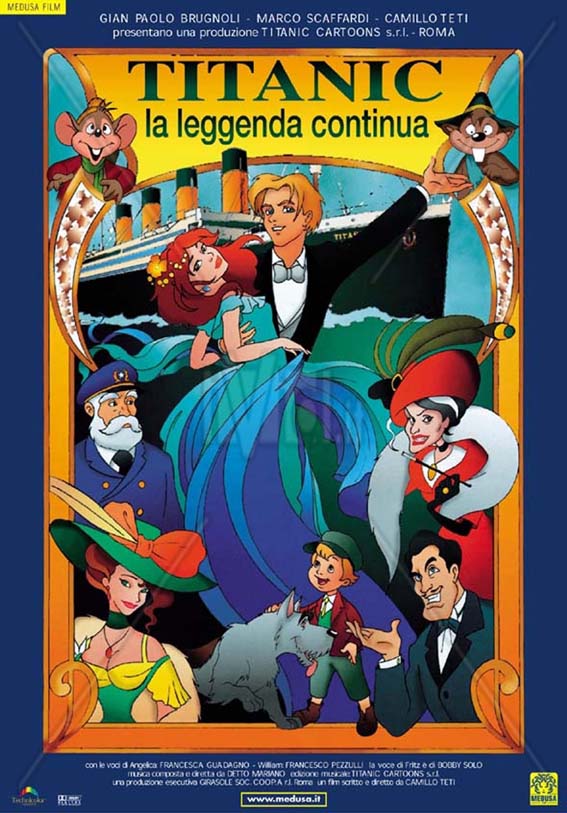
Numerous documentaries have covered the story of the Titanic:
- - Titanici suomalaisten tarina (Finnish documentary from 1996)
- - Titanica by Stephen Low (1992)
- - Ghosts of the Abyss by James Cameron (2003)
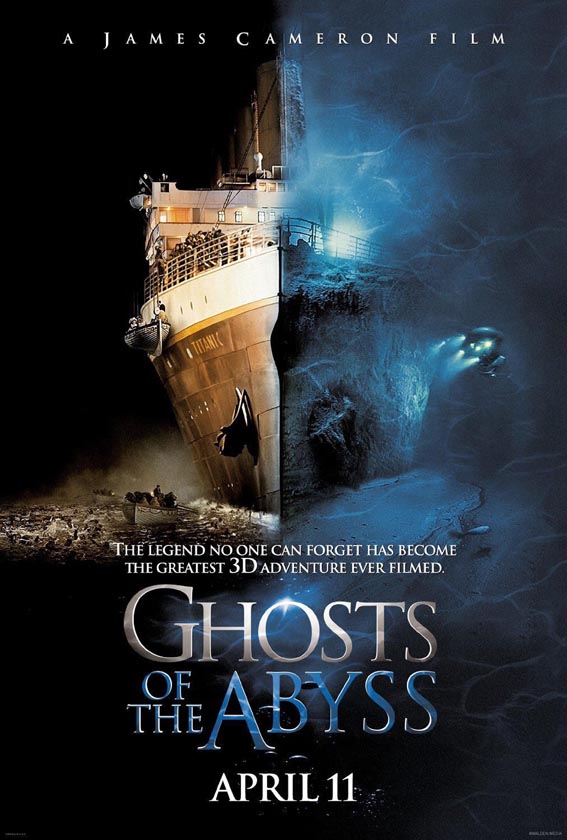
Ever since her tragic end, the Titanic has always enthralled us and never ceases to capture our imagination. In 2012, 100 after the ship sank, the Titanic will once again set sail…
- - Titanic in 3D: James Cameron will unveil his 3D version of the film Titanic on April 6th 2012 worldwide, 14 years after the biggest success in the history of cinema, winner of 11 Oscars, including Best film and Best Director.
- - Titanic: Even though there have been a plethora of films and reports on the ship since she sank, no other mini-series on the mythical catastrophe has ever been produced of such a length as this version by Julian Fellowes. Shot last Spring in Hungary by a British production team, this series has 4 episodes lasting over 4 hours in total.






